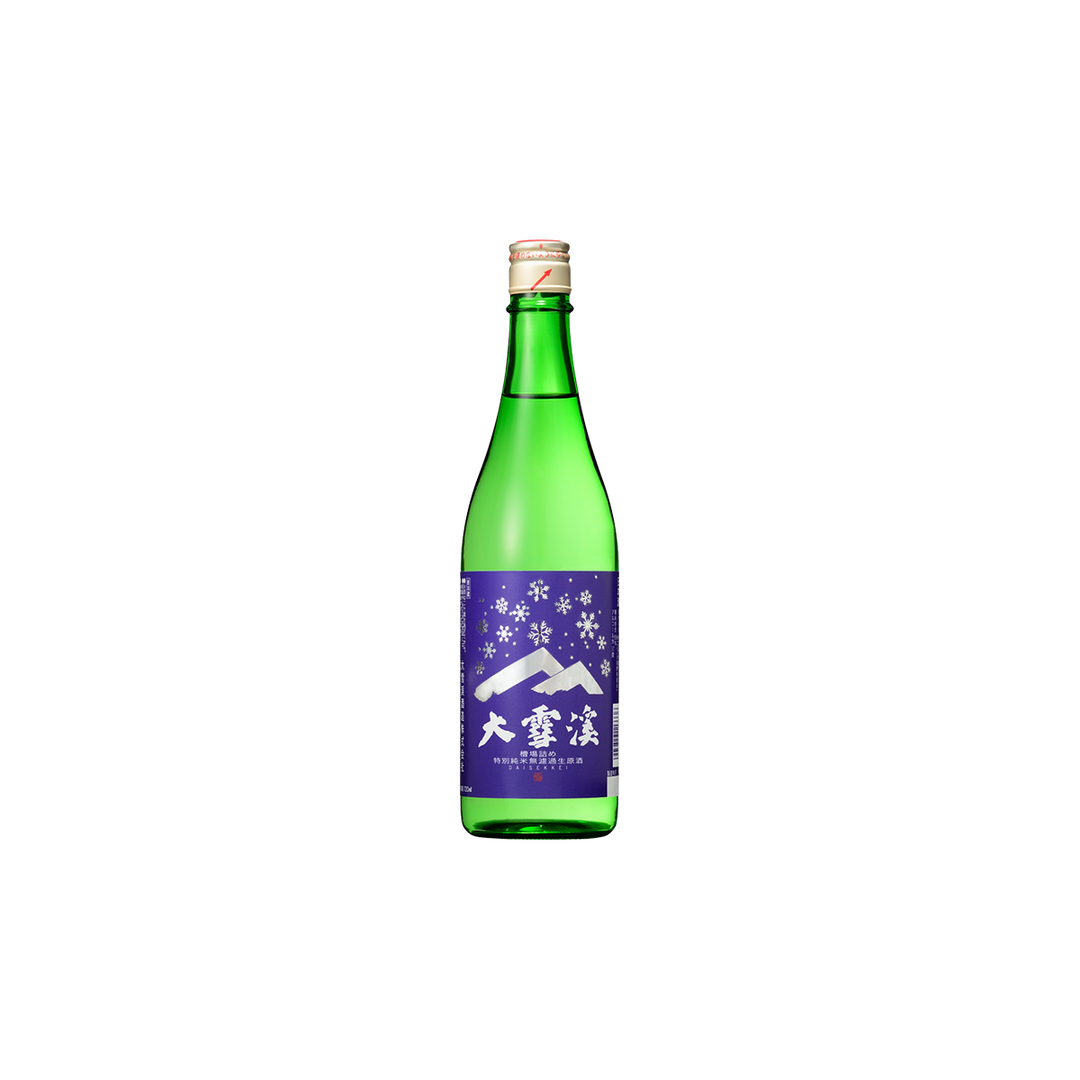
Daisekkei Junmai Muroka Nama Genshu
- In stock, ready to ship
Have you ever put your tongue on iceplant and felt it dry out as the osmotic boundary draws moisture from your tongue into the salty, mineral-rich succulent? It's one of a number of species that have adapted to live in coastal areas with little access to fresh water, and its high moisture content is an adaptation allowing it to withstand the high salinity and mineral content of sea water.
I warned my guest before pouring-- "Are you OK with astringent flavors? It's a little ginny, a little salty"-- and they agreed, and I couldn't be more grateful that they pulled me into their taste memory here. This is the real joy of operating a sake shop.
My tasting notes are less romantic, but perhaps no less accurate. I get a salty brightness: pomelo, tinned Chinese mandarins, cucumber, lemon zest, minerality, watermelon rind, bitter melon, gin, and sea salt, with a little sweetness sitting on top to balance out the bitterness and astringency. It's relatively lighter in body than a lot of the other Spring namas-- brighter, more mineral, and without a doubt one of the most unique of the bunch. I'm astonished that it's made with Kumamoto yeast, which usually shows such a distinctive and gentle fruity character. Who knows-- maybe it's something in this high alpine water that is creating such a unique flavor profile.
“I devote my life to making sake and always think about sake first. I personally control every aspect of the brewing to ensure the whole process runs happily”
Toji Mamoru Nagase
Brewery: Daisekkei Shuzo ( 大雪渓), named for a gorge in the Northern Japan Alps
Est. 1898
Location: Ikeda, Nagano prefecture
Rice: Hitogokochi (Nagano)
Polish: 60%
Yeast: Kumamoto (a variant of #9), #1001
ABV: 17%
SMV: +2
Acidity: 1.7
Located beneath the silver ridges of the Northern Alps, in the vast grain belt of Azumino with its abundant spring water, our sake has long been popular under the brands "Kikyo Masamune" and "Seikozakura". At that time, the company was called "Ikeda Brewery Limited Partnership Company", but after the war (1949), the name was changed to "Daisekkei". In 1953, our sake won the top prize at Japan's National New Sake Tasting Competition, and was also selected as a gift sake for the Imperial Family. The master brewer at the time, Hanaoka Jukanji, received the Yellow Ribbon Medal in 1966.
The brand name "Daisekkei" was chosen in honor of the magnificent scenery of Mt. Shirouma, where one of the three largest snowfields in Japan is located. Our standard products, "Josen" and "Kuradashi", feature aerial photographs of this magnificent natural scenery. The calligraphy style was created by Oka Fumoto, an Araragi school poet with ties to our brewery. Oka Fumoto was a disciple of Masaoka Shiki and the teacher of our company's previous president, Usui Kazuo. The calligraphy style for "Daisekkei" was written by Oka at the Usui family home, where he passed away.



